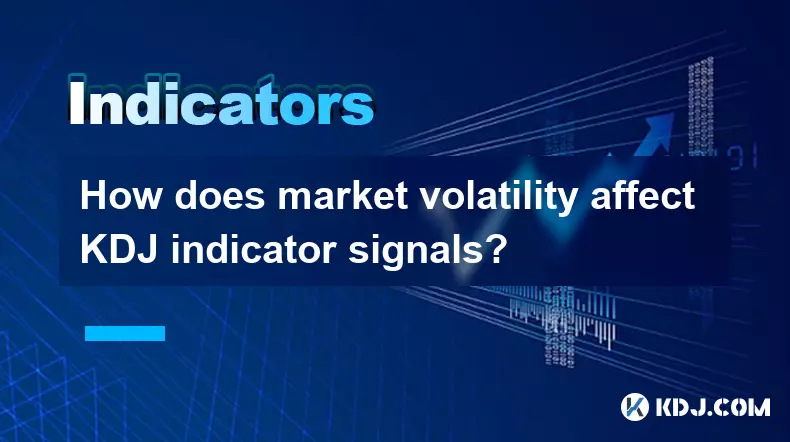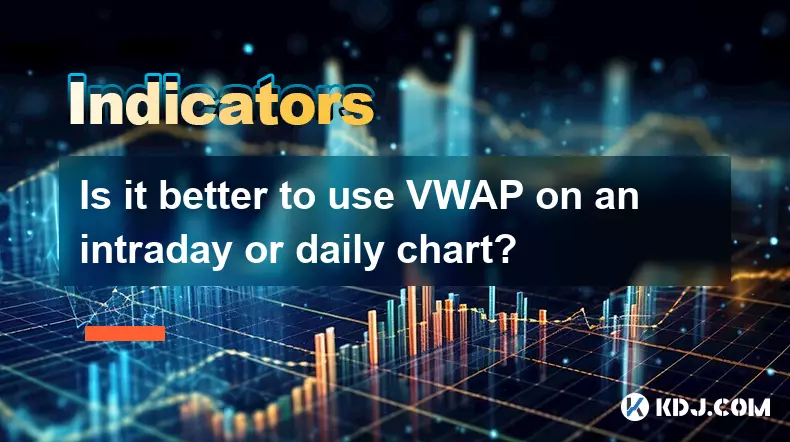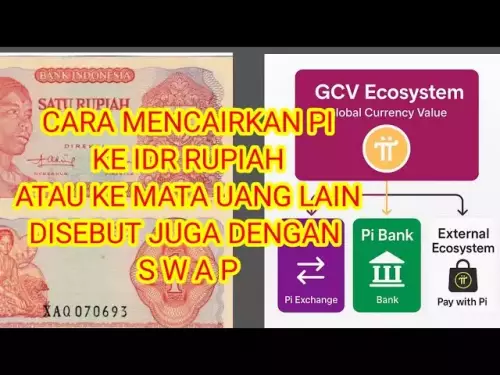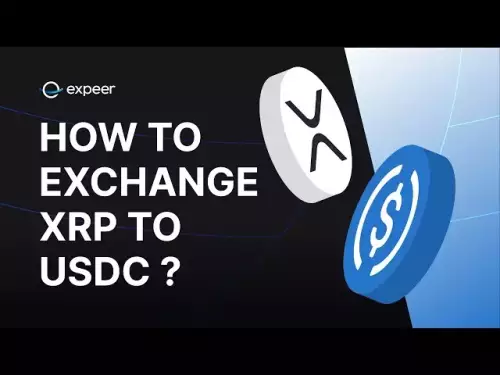-
 bitcoin
bitcoin $112715.707551 USD
-1.71% -
 ethereum
ethereum $4101.475385 USD
-3.01% -
 tether
tether $1.000644 USD
-0.02% -
 bnb
bnb $1207.619465 USD
-6.77% -
 xrp
xrp $2.501451 USD
-3.98% -
 solana
solana $202.947124 USD
-3.32% -
 usd-coin
usd-coin $1.000295 USD
0.04% -
 dogecoin
dogecoin $0.203884 USD
-4.47% -
 tron
tron $0.317154 USD
-1.72% -
 cardano
cardano $0.695009 USD
-4.43% -
 hyperliquid
hyperliquid $38.853961 USD
-8.23% -
 chainlink
chainlink $18.988674 USD
-4.64% -
 ethena-usde
ethena-usde $1.000233 USD
-0.03% -
 stellar
stellar $0.337050 USD
-3.63% -
 bitcoin-cash
bitcoin-cash $536.861728 USD
-1.28%
How does market volatility affect KDJ indicator signals?
The KDJ indicator helps crypto traders spot overbought/oversold levels, but high volatility can trigger false signals, requiring adjusted settings and confirmation tools for accuracy.
Oct 15, 2025 at 09:01 pm

Understanding the KDJ Indicator in Cryptocurrency Trading
The KDJ indicator, an extension of the stochastic oscillator, is widely used in cryptocurrency trading to identify overbought and oversold conditions. It consists of three lines: %K (the fast line), %D (the slow line, which is a moving average of %K), and %J (a divergence value that reflects the distance between %K and %D). Traders rely on crossovers and extreme values to time their entries and exits. In the highly volatile environment of the crypto market, the behavior of the KDJ can shift dramatically compared to traditional financial markets.
High volatility amplifies signal frequency and reduces reliability, making it crucial for traders to adjust their interpretation methods. Sudden price swings common in digital assets can trigger rapid movements in the KDJ lines, leading to multiple false signals within short periods. This sensitivity becomes both an advantage and a risk depending on how it's managed.
- The %K line reacts quickly to price changes, often crossing %D during minor fluctuations that don’t reflect true trend reversals.
- During strong bullish or bearish runs, the %J line may extend far beyond 100 or below 0, suggesting extreme momentum but not necessarily an imminent reversal.
- Overbought readings above 80 do not always precede downturns in a parabolic uptrend, especially during FOMO-driven rallies.
- Oversold levels below 20 can persist for extended durations during prolonged sell-offs, misleading traders expecting immediate bounce-backs.
- Divergence signals between price action and the KDJ become more significant when confirmed across longer timeframes like 4-hour or daily charts.
Impact of Sudden Price Swings on Signal Accuracy
Cryptocurrencies are prone to sharp movements caused by macroeconomic news, exchange outages, whale activities, or social media influence. These events distort typical technical patterns and challenge the effectiveness of indicators like KDJ.
- A 20% drop in Bitcoin within two hours can push the KDJ into deep oversold territory, yet recovery might take days or fail entirely due to underlying fundamentals.
- Whipsaw effects occur frequently when prices oscillate rapidly around key support/resistance zones, causing repeated %K-%D crossovers with no sustained directional move.
- Leverage liquidations amplify downward or upward pressure, creating artificial momentum that skews the KDJ calculation based solely on closing prices.
- Low liquidity altcoins experience exaggerated KDJ swings even with moderate trade volumes, increasing the likelihood of premature buy/sell decisions.
- Timeframe selection plays a critical role—using 15-minute charts during high volatility yields excessive noise, whereas weekly charts may miss timely opportunities.
Adapting KDJ Strategies for Volatile Market Conditions
To maintain edge in turbulent markets, traders modify standard KDJ settings and combine them with complementary tools. Relying solely on default parameters (usually 9,3,3) proves ineffective when volatility spikes beyond historical norms.
- Increasing the smoothing period from 3 to 5 or 7 helps filter out erratic %D movements and reduces false crossover signals.
- Applying price filters such as requiring a minimum candle body size before acting on a KDJ signal improves decision quality.
- Integrating volume-weighted analysis ensures that KDJ extremes coincide with actual market participation rather than thin-order-book moves.
- Using Bollinger Bands or Average True Range (ATR) alongside KDJ allows traders to gauge whether current volatility levels justify acting on a given signal.
- Combining KDJ with moving averages or MACD adds confirmation layers, reducing impulsive reactions to isolated indicator readings.
Frequently Asked Questions
What does a %J value above 100 indicate during a crypto rally?A %J value exceeding 100 suggests strong bullish momentum where the price is closing near its highest range over the lookback period. While traditionally seen as overextended, in trending crypto markets this condition can persist for extended periods without reversal.
Can the KDJ be used effectively on stablecoins?Due to minimal price variation, the KDJ generates few meaningful signals on stablecoins. The indicator remains mostly flat unless there’s a de-pegging event, limiting its utility in stablecoin trading strategies.
How should traders handle conflicting KDJ signals across different timeframes?Higher timeframe signals generally carry more weight. If the daily chart shows a bearish %K-%D crossover while the hourly chart indicates a bullish cross, the longer-term bearish bias should take precedence unless volume and momentum strongly support a breakout.
Is the KDJ suitable for automated trading bots in crypto?Yes, but with caution. Bots using KDJ must include volatility thresholds and confirmation rules to avoid executing trades during choppy or low-volume periods. Blindly following crossovers often results in high drawdowns due to frequent whipsaws.
Disclaimer:info@kdj.com
The information provided is not trading advice. kdj.com does not assume any responsibility for any investments made based on the information provided in this article. Cryptocurrencies are highly volatile and it is highly recommended that you invest with caution after thorough research!
If you believe that the content used on this website infringes your copyright, please contact us immediately (info@kdj.com) and we will delete it promptly.
- PayPal, PYUSD, and Stablecoins: Riding the Wave of Digital Finance
- 2025-10-16 04:50:01
- Milk Mocha's $HUGS Token: Why the Whitelist & Presale 2025 are Exploding
- 2025-10-16 04:30:01
- Microsoft, Bitcoin, and GitHub: A Balancing Act in the Digital Age
- 2025-10-16 04:30:01
- Navigating the Crypto Chaos: Bitcoin Crash, Maturing Meme Coins, and Market Momentum
- 2025-10-16 04:30:01
- Sui Platform's Typus Finance Hit by Oracle Exploit: A Deep Dive
- 2025-10-16 05:10:01
- Solana's On-Chain Growth: Grayscale's Bets and the $260 Target
- 2025-10-16 04:40:01
Related knowledge

What's the main difference between VWAP and TWAP?
Oct 12,2025 at 11:54am
Understanding VWAP and Its Role in Crypto Trading1. Volume Weighted Average Price (VWAP) is a trading benchmark that calculates the average price of a...

How do you identify exhaustion moves using VWAP and its bands?
Oct 12,2025 at 08:00am
Understanding the Role of Decentralized Exchanges in Crypto Trading1. Decentralized exchanges (DEXs) operate without a central authority, allowing use...

Is it better to use VWAP on an intraday or daily chart?
Oct 15,2025 at 02:01am
Intraday Trading and the Role of VWAP1. Intraday traders frequently rely on VWAP (Volume Weighted Average Price) as a dynamic benchmark for assessing ...

How do you use VWAP to scale in and out of positions?
Oct 14,2025 at 02:19am
Understanding VWAP as a Dynamic Benchmark1. The Volume Weighted Average Price (VWAP) is not just an indicator—it functions as a dynamic benchmark that...

What are the main advantages of using VWAP over EMA?
Oct 11,2025 at 02:18am
Main Advantages of Using VWAP Over EMA1. Volume-Weighted Average Price (VWAP) incorporates trading volume into its calculation, offering a more accura...

How do you use VWAP on different chart types like Heikin Ashi?
Oct 11,2025 at 05:01pm
Understanding VWAP in the Context of Heikin Ashi Charts1. The Volume Weighted Average Price (VWAP) is a powerful analytical tool commonly used by trad...

What's the main difference between VWAP and TWAP?
Oct 12,2025 at 11:54am
Understanding VWAP and Its Role in Crypto Trading1. Volume Weighted Average Price (VWAP) is a trading benchmark that calculates the average price of a...

How do you identify exhaustion moves using VWAP and its bands?
Oct 12,2025 at 08:00am
Understanding the Role of Decentralized Exchanges in Crypto Trading1. Decentralized exchanges (DEXs) operate without a central authority, allowing use...

Is it better to use VWAP on an intraday or daily chart?
Oct 15,2025 at 02:01am
Intraday Trading and the Role of VWAP1. Intraday traders frequently rely on VWAP (Volume Weighted Average Price) as a dynamic benchmark for assessing ...

How do you use VWAP to scale in and out of positions?
Oct 14,2025 at 02:19am
Understanding VWAP as a Dynamic Benchmark1. The Volume Weighted Average Price (VWAP) is not just an indicator—it functions as a dynamic benchmark that...

What are the main advantages of using VWAP over EMA?
Oct 11,2025 at 02:18am
Main Advantages of Using VWAP Over EMA1. Volume-Weighted Average Price (VWAP) incorporates trading volume into its calculation, offering a more accura...

How do you use VWAP on different chart types like Heikin Ashi?
Oct 11,2025 at 05:01pm
Understanding VWAP in the Context of Heikin Ashi Charts1. The Volume Weighted Average Price (VWAP) is a powerful analytical tool commonly used by trad...
See all articles










































































